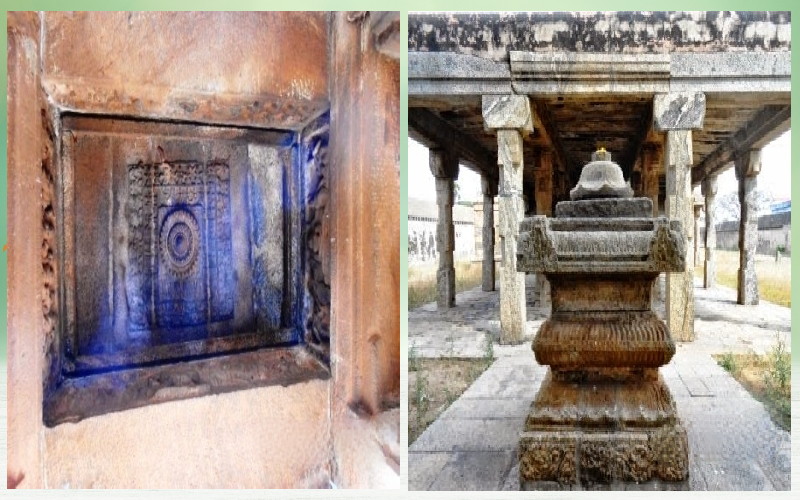
The Jain religion is known as the 'Samana Madham' in the Tamil speaking parts of the country.
Tamil Nadu had a flourishing Jain period long ago. Despite being numerically small, the Jains had to be accoladed for their literary contribution in Tamil Nadu. Over centuries many good works had been done by the Jains of Kongunadu. The great scholar Kovai Kizhar C. M. Ramachandran (1888 - 1968) was among the earliest in the twentieth century to chronicle the story of the Jains in Kongunadu. Tamil Nadu had been sheltering this religion from time immemorial.
Mahaveera lived long ago and he was the twenty fourth Tirtankara of the Jain religion. The twenty third Tirtankara, Parsvanath happened to be identified as the earliest historical person connected with this ancient native faith of India. Chandragupta Maurya accompanied his teacher Bhadrabahu and moved over to the south. It was prophesized that a 12-year famine was going to torment the land. A number of followers of Jainism accompanied them and they settled down in Karnataka. A lot of Jain movement into the south took place between the third century BC and the sixth century AD. Literature confirms this movement.
Even today Karnataka is a great centre for Jainism and the statue of Gomateshwara at Shravanbelagola is a major Jain centre. Until the advent of the Bhakti movement, Jainism remained popular in Tamil Nadu. There are several legends connected with the rise and decline of Jainism in Tamil Nadu.
A large number of Jains belonging to the Digambara sect lived in Tamil Nadu. Many of them settled down in the Kongunadu region over the time. They had moved into Kongunadu through the Gajjalahatti Pass. Kongunadu was connected further through the rule of the Gangas.
According to Dr. R. Poongundran, rtd. Assistant Director of the Tamilnadu Archelogical Department, "There were four types of Jains in the Tamil region. They belonged to the Dravida Sangam, Kaastha Sangam, Desi Sangam and Yappiniya Sangam. These people believed in salvation for women. They believed a lot in the Yakshi (lady) and even now you can find the figurines of Yakshi-s in Kongunadu. Particularly, Ivarmalai near Palani has one. The people of this part of the country worshipped the Mother Goddess and hence the Yakshi was important for the Jains from this part of the country".
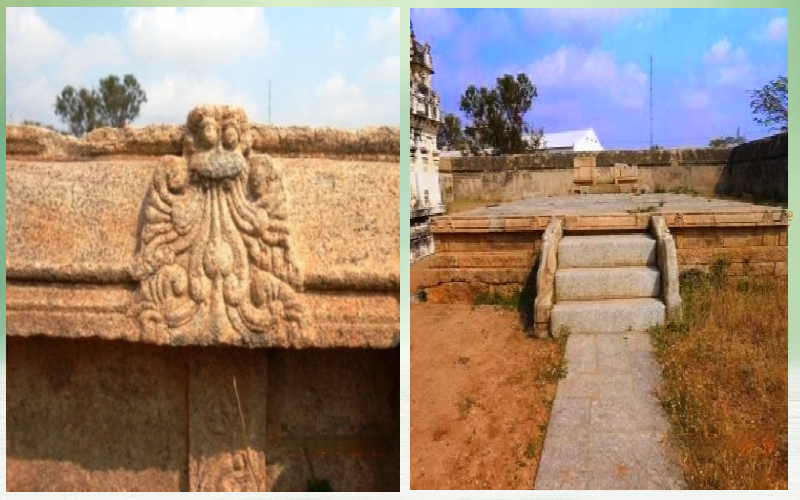
“The Jain monks did not bother about their physical appearance. They did not brush their teeth and used their hands for collecting and eating their food. The lack of access to these monks was also another issue. Perhaps this was also a reason for the decline of the Jain faith in Kongunadu” opined C. M. Ramachandran. Jain intellectuals wrote in Tamil and also in Manipravalam (a mixture of Tamil and Sanskrit). The latter day Vaishnavaite scholars used a lot of Manipravalam. It literally meant ruby-coral and it likely played a role in the emergence of the Malayalam language and scripts from Tamil-Brahmi, Tamil, and Sanskrit.
The Velirs were the local rulers in Kongunadu and they ruled from their hill forts. The Gangas of Talakkad had grown powerful over time and they absorbed Kongunadu into their kingdom. The Ganga rulers were Jains and therefore they patronized Jain scholars. These scholars and Saints became the Gurus of the Ganga rulers. In fact, Simhanandi, the Jain monk was responsible for the founding of the Ganga dynasty and he had visited Kongunadu. They did a lot of charity and had also built a number of Jain establishments. Eventually, the Jain influence entered Kongunadu during the Ganga period. Durvineeta was a popular Ganga ruler and he lived around the fifth century AD. He was a learned scholar and had written a treatise of the work of the great Bharavi.
A number of Jains settled down in Kurumbanadu, which was a part of Kongunadu. They began establishing themselves in Vijayamangalam near Perundurai (near Erode in Tamil Nadu). The locals followed the settlers by embracing the Jain faith. There lived a scholar in Vijayamangalam and he was the local ruler too. He was known by the name Konguvelir and was popular for his translation of the work, ‘Brihadkatha’ into Tamil. It came to be known as ‘Perunkadhai’ in Tamil. Konguvelir had rendered his work in the 'Agavarpa' style. This was also known as 'Udayanan Charitram' and this literary work was compared with the five great Tamil classics which included, ‘Silappadikaram’ (the story of the anklet connected with the chaste Kannagi, the heroine of the legend).
Eminent scholar, Dr. Vijayalakshmi has done a lot of research on this subject and has stated that Konguvelir had translated ‘Brihatkatha’ from the extinct 'Paisachi' language into Tamil. Her opinion is also earlier reflected in the works of the great Tamil scholar, U. Ve. Swaminatha Iyer (1855 - 1942), who had stated that this Tamil ‘Perunkadhai’ had a link to the Paisachi language for it seems to contain many words from the defunct language.
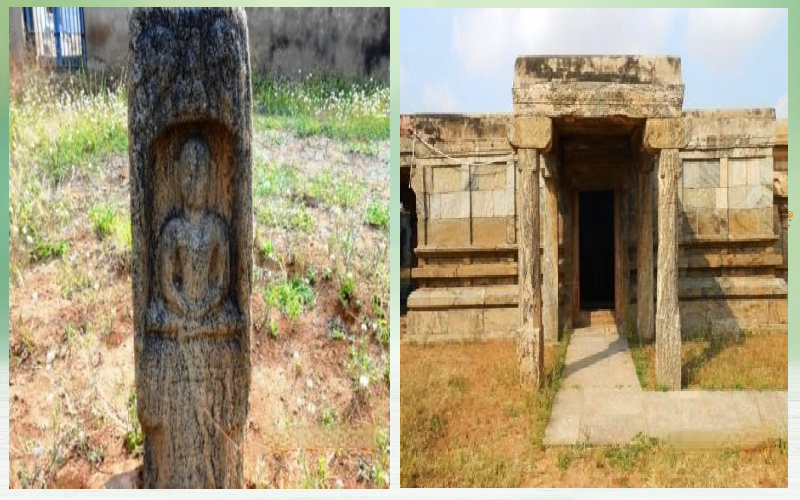
Well, the Jain faith spread into the other parts of Kongunadu which consists of the modern Coimbatore, Tirupur, Erode, Namakkal, Salem, Karur, Nilgiris, Krishnagiri and Dharmapuri districts (modern day western Tamil Nadu). Eventually, Jainism spread into a number of places in the Kongunadu region and they include Poondurainadu, Kavadikkanadu, Nallurkkanadu, Vaigavinadu (parts of Kongunadu which had 24 such subdivisions). Scholars like Adiyaarku Nallaar, Gunaveera Pandithar and Bhavanandhi Munivar added to the wealth of the Jain faith and Tamil literature from Kongunadu.
The author, Konguvelir described the beauty of Vasavadatta in a lovely style. In one place, he talked about the elephant taming abilities of Udayana. The Tamils had classified lands into five types, Mullai, Marudam, Kurinji, Paalai and Neithal. The poet described the transit of the elephant through these types of lands. He added details about the conditions prevalent in those times. The skills of the crafts persons were spoken about in a beautiful manner. Konguvelir had also included the principles of Jainism in his narration.
Researchers found every faith being sustained through three types of institutions. They were the temple, the mutt, and the society. The Jain religion sustained itself through these three arms and it was more of temples in Kongunadu. They had done well during the reign of the Ganga rulers. Inscriptions proved that the Jain religion was doing well during the twelfth and thirteenth centuries. This was evidenced during the times of Adiyaarku Nallaar and Bhavanandhi Munivar. The centuries which followed saw a gradual decay. Mutts and the Sangams /societies disappeared. All that was left only were the temples.
The Vijayamangalam Temple is an important Jain centre. It has been endowed with a good building. Vijayamangalam is a Sanskrit name and perhaps it is the victory of faith which led to the place being named such. Otherwise, most of the places carry Tamil names. These Jain places are known as 'Basti' and the temple is located in Bastipuram at Vijayamangalam. The deity is unadorned and therefore is known as Ammaneswarar. Ammanam means ‘nude’ in Tamil and Ammanam also means ‘Samanam’ or ‘Jainam’ in Tamil. The locals have been accepting it as a Hindu deity and the priests are treated like Hindu priests. These priests wear sacred threads are therefore receive the same regard as the Hindu priests.
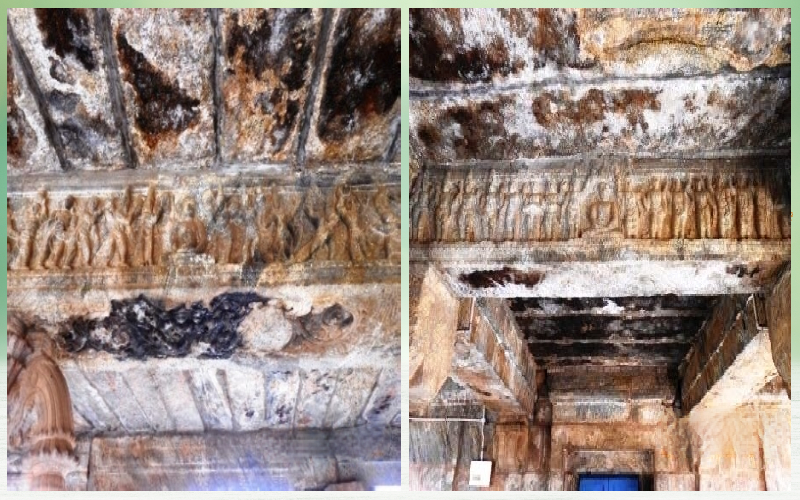
Karmega Kavignar who had lived until the year 1895 used to belong to Vijayamangalam. He was the author of the wonderful work 'Kongumandala Sathakam'. He toured all over Kongunadu and had written about the Jain faith in this part of the country. A lot of details would have gone missing if not for his rendition. Karmega Kavignar spoke Kannada at home but his work was in Tamil. The facts given out by him were quite daring.
"’Nannool’ was a great work. It helped people to understand Tamil and its literary principles in a lucid manner. Bhavanandhi Munivar, the son of Sanmathi Munivar composed ‘Nannool’ and offered it to the world from Vijayamangalam. He had written it in Seenapuram (Jeenapuram)," stated Pushyamitran, a Tamil Jain.
The Vijayamangalam temple has the sanctum of deity, Chandraprabha Tirtankara. There are other enclosures too and spaces housing Mahaveera. Pillars, carvings are galore in this temple. Images of dancers can also be seen. The dwajasthambam or Kodimaram (flag post) is in the local Kongunadu style. It has a central pillar and four smaller pillars on the four sides. One can also see Ananthanatha Tirtankara, Pandavas and Draupadi, Rishabdeva among other deities. The temple is also known as 'Veerasanganatha Perumpalli'. The name ‘Palli’ denotes a Jain settlement in Tamil Nadu. One can find certain inscriptions in the temple that talk about the donations received for the conduct of festivals. The year of a Vijayanagar ruler can be seen in one of the inscriptions. Therefore, we can conclude that the temple has seen good days well into the Vijayanagar period.
One inscription in Vijayamangalam talks about the ritual 'Sallekhana' being performed by the daughter of Chamundaraya and it belongs to the tenth century. Sallekhana is a ritual through which the seeker extinguishes life by fasting. We can also find a Kongu Chola inscription in the temple.
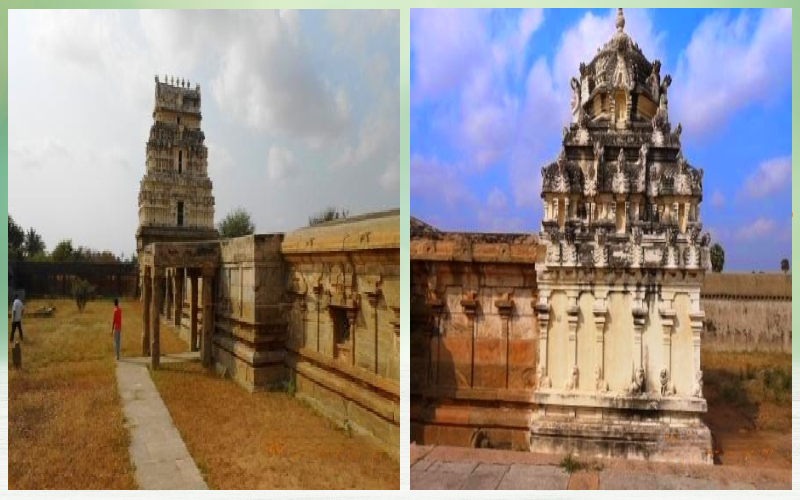
The Kongu Chola rulers were the feudatories of the mighty Cholas who ruled the south.
Jain faith was popular in other parts of Kongunadu as well. A number of Jain monks lived in caves with carved stone beds. The names of these saints, the people who donated them were found on alongside. Several of the temples had become Hindu overtime. One classic case could be Thirumurthy Temple near Udumalpet.
There are number of Jain centres in the periphery of Vijayamangalam - Thingalur, Seenapuram, Vellode, Poonthurai and Arasannamalai. The Yakshi from Arasannamalai is known as Arasaathaal. Adinath is worshipped in Vellode and you can also find Chandra Prabha Tirtankara. The shrine of Parsvanath is found in Poonthurai. Seenapuram is endowed with Adinath and Thingalur has an inscription connected with the Kongu Chola ruler, Vikrama Chola.
Jain impressions and symbols can be found in the Pollachi region, Kalandhai (Vachanandhi, the author of Vachanandhi Maalai was born here), Devanampalayam, Anaimalai, Thirumurthy Malai. The Jain deity is known as Thirumurthy as the old Tamil classics. One can see the old beds of the Jain monks in Aliyar, the Yakshi connected with Adinath Tirtankara has become Aadhaliamman. Now let us come to Ivarmalai. One can find caves which are enriched with carvings of the Tirtankaras. Several names are found inscribed - Ajjanandi, Pathini Kurathiyar etc., Another inscription talks about Santhiveerakuravar, the student of Gunaveera Kuravadigal helping out the restoration of the caves during the eighth year of Varaguna Pandya.
Pugalur near Karur is part of Kongunadu. The Arunaattaar Malai (hill) has a few caves near a shrine of Lord Karthikeya. It is said that a few Jain monks used to stay in these caves and these meditating monks were revered by the local populace nearly 2000 years ago. In fact, the flooring is even undulated.
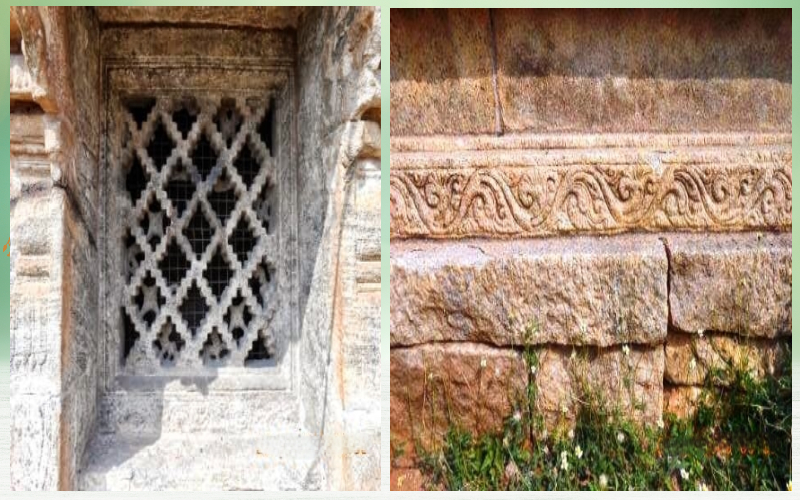
One can notice stone beds made for these monks by kings, traders, and women. Quite a few inscriptions are found on these caves. One inscription in Tamil Brahmi belonging to the second century states that a Chera Prince, Ilamkadukkone had got it facilitated for the Jain monk, Sengayapan. We can see the names of his father, Perunkodukkone and grandfather, Sellirumborai. This is oldest Jain establishment in Kongunadu.
Arachalur in the Erode belt sheltered an exotic Jain location. Pulavar Rasu discovered this surprise in the year 1960. Scholars did a study of this site and had stated that it belonged to the second century AD. This might be the second Jain centre in Kongunadu. The inscriptions were found in both Tamil Brahmi and ‘Vattezhuthu’. Perhaps it might belong to the period when the transition was taking place from Tamil Brahmi to Vattezhuthu. The place was endowed with music related inscriptions belonging to the same period. This could be the first inscription in Tamil Nadu to have musical notes. The Tamil classic, ‘Silappadikaram’ was composed in the same century and it had a lot of references to music and dance.
Alathur is another location near Punjai Puliayampatti in Western Tamil Nadu (Kongunadu). They have used white stones from a nearby hill in order to construct a Jain Temple in this place. This is said to be established in the tenth century. Vaanavan Mahadevi, the Queen of Veera Chola is said to have contributed towards the construction of this temple. This makes us understand the fact that the ruling class did not differentiate between the Jain and Hindu faiths. The twenty fourth, Tirtankara Mahaveera is addressed as ‘Jinaayanaar’ in this temple inscription. Normally, ‘Naayanaar’ is used to address the famous 63 Shaivaite Saints. This shows the broad mindedness of the people belonging to those times. Kongunadu has a number of other ancient Jain spots. However, lack of facilities has come in the way of maintenance. The Kovilpalayam deity is being worshipped as Ganesha! Parsvath Tirtankara from Pongalur is in the museum.
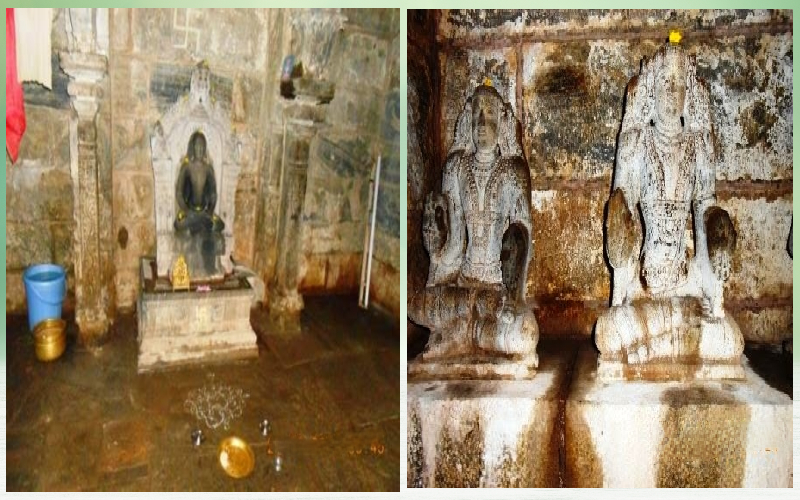
Kovai Kizhar C. M. Ramachandran, Dr. R. Poongundran, Prof. Ganesan, Pulavar Rasu and R. Selvarasu had done a yeoman service by discovering and deciphering several inscriptions.
The statues of the Jain Tirtankaras are mostly carved out of black granite. The icon of Mahaveera from Alathur is lovely. He is seen meditating under a three levelled umbrella within the shade of an Asoka tree. The Jain heritage of Kongunadu is a must see and can be part of heritage tours. More importantly, it needs a lot of attention.
NEXT ARTICLE